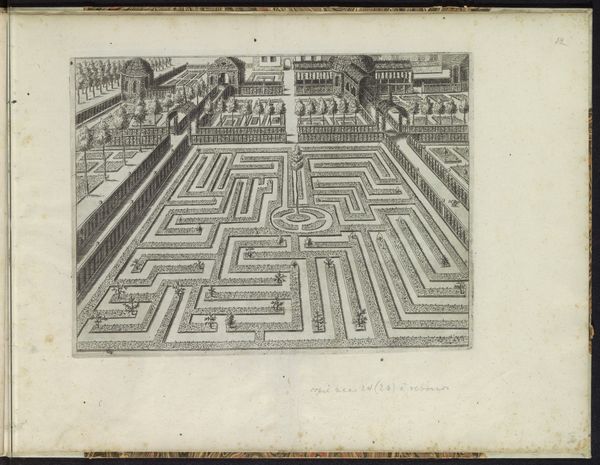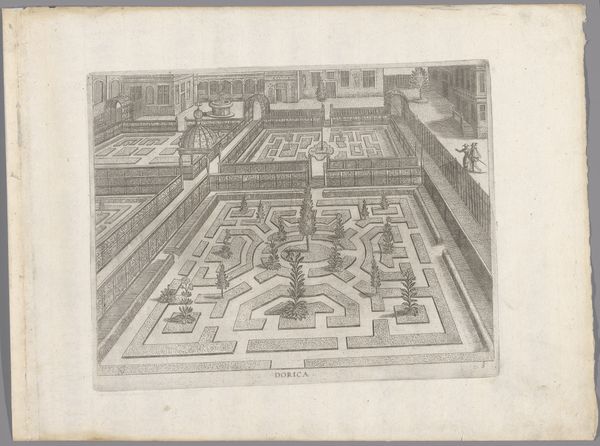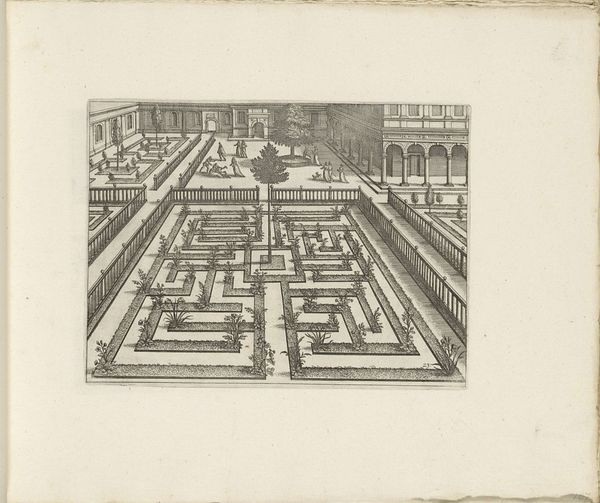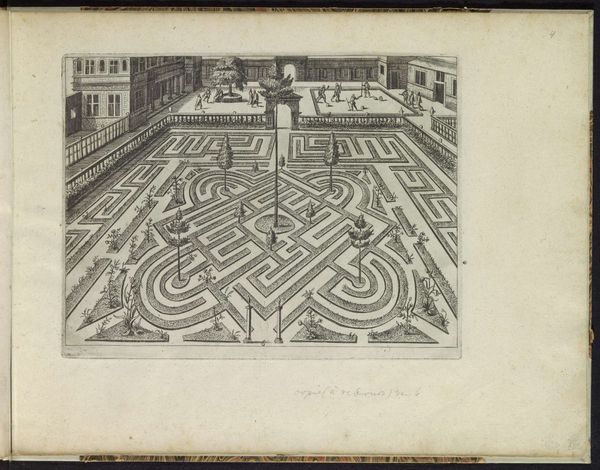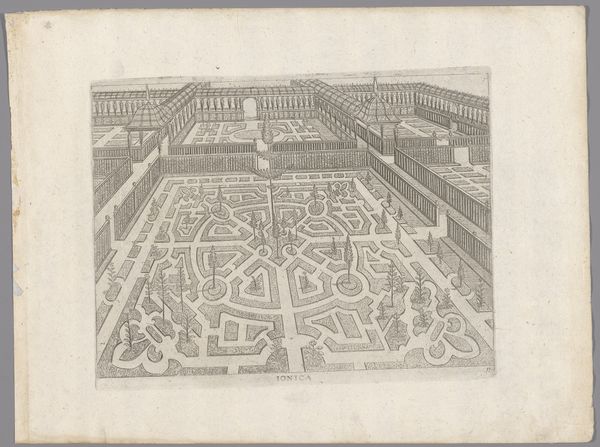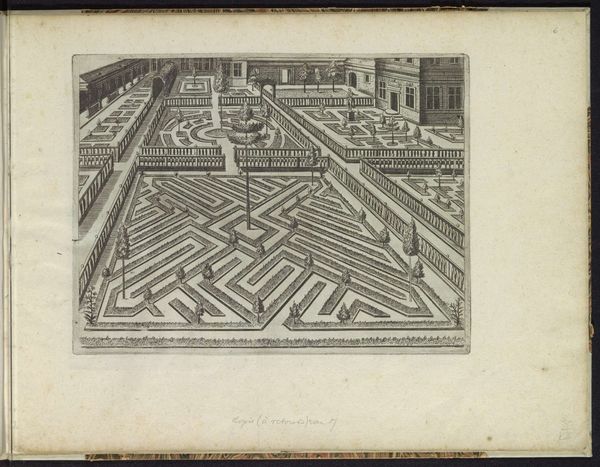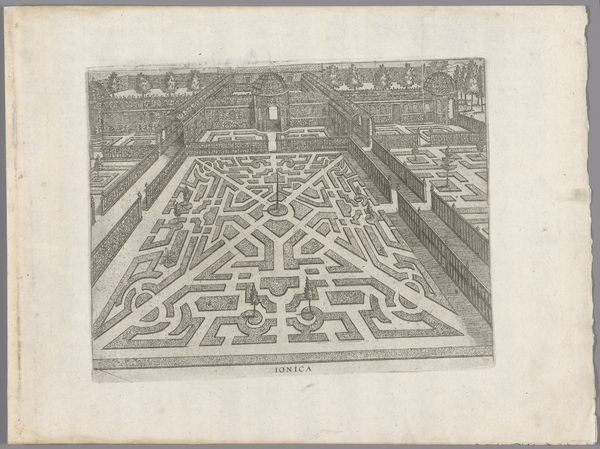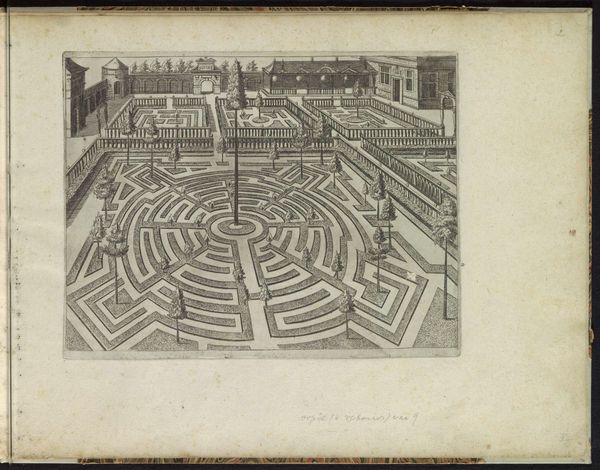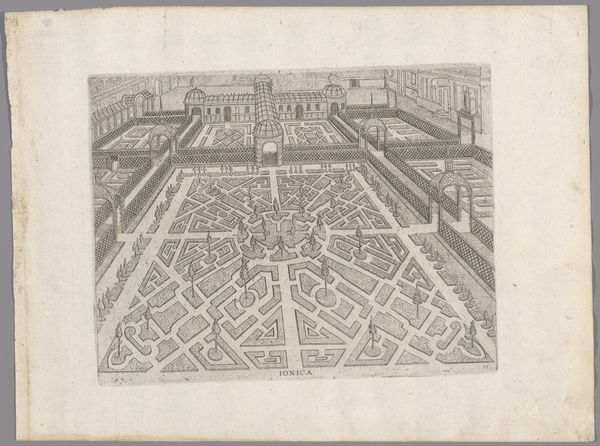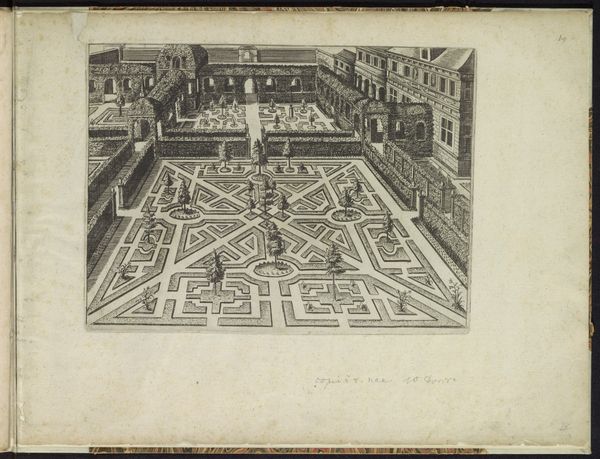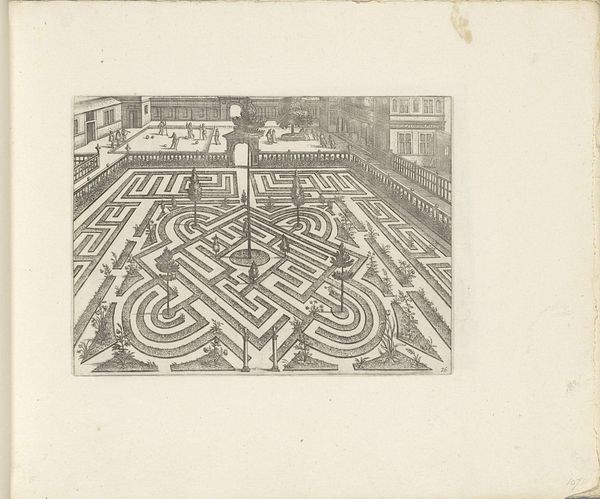
drawing, print, engraving
#
drawing
# print
#
landscape
#
mannerism
#
geometric
#
engraving
Dimensions: height 192 mm, width 250 mm
Copyright: Rijks Museum: Open Domain
Curator: Here we have "Tuin met een rechthoekige parterre en een boom," or "Garden with a rectangular parterre and a tree," an engraving created in 1583. Editor: My first thought is of immense, almost oppressive, control. The rigid geometry and severe lines really leave a strong impression. Curator: It’s a fascinating piece because, while anonymous, it speaks volumes about the period’s fascination with order and control, and how landscape design was used to project power. Mannerism valued artifice, and gardens became stages for elaborate displays. Editor: Precisely. You can see the labour embedded in every precise line, the deliberate act of shaping nature itself. The print’s materiality highlights the social status attached to commissioning such designs. Were these prints intended to instruct others, or just to display a level of taste? Curator: Most likely both. Prints circulated widely, acting as pattern books for wealthy landowners eager to emulate these grand designs. They helped to disseminate aristocratic tastes and project wealth, and influenced the very concept of status and sophistication throughout the continent. Editor: There's also the unrealised potential here. The texture that's evoked almost surpasses the precision we have already discussed, I find my thoughts going straight to the type of soil. Who actually tilled the garden according to this restrictive design? Curator: It certainly poses those questions, doesn't it? Consider the manual labour required to maintain these geometric patterns. Gardens weren't just aesthetic spaces; they were sites of intense production. The engraver captures a particular vision of power, but hints to some exploitation and the vast differences in class. Editor: A sobering reminder that even the most seemingly beautiful creations often rest on layers of hidden labour. It leaves me pondering on the real cost of beauty in the early modern era. Curator: It invites us to delve beneath the surface of aesthetic perfection, to see the hands that shaped the world we study.
Comments
No comments
Be the first to comment and join the conversation on the ultimate creative platform.
